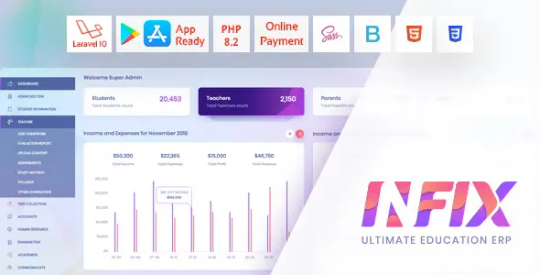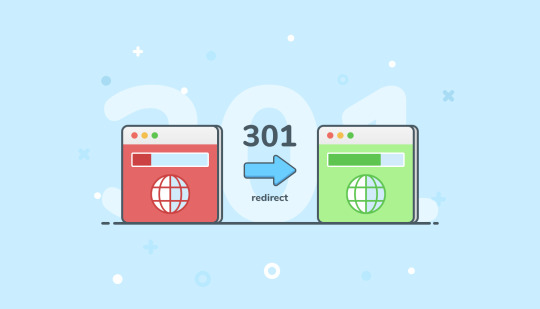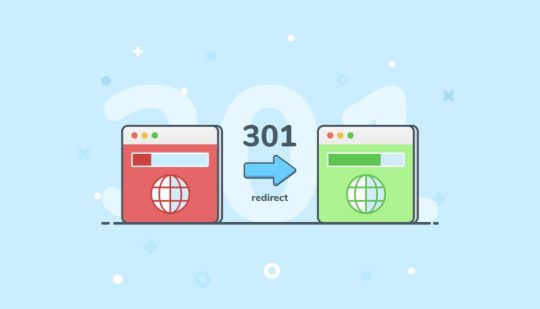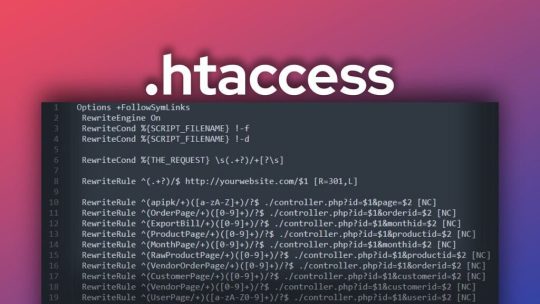#apache cpanel
Explore tagged Tumblr posts
Text
My favorite example of this is zlib. Just like xz-utils, it's a compression library. Arguably it's the compression library, because zlib is absolutely everywhere – including in OpenSSH. New versions of their source code are distributed from zlib.net, and the server running zlib.net is hosted by a small company in Michigan called a2hosting.com where a managed VPS starts at $26.95/month. This hosting company is particularly fond of using CPanel and exim, both of which are enabled for zlib.net. That means the supply chain integrity for practically everything relies on the integrity of a2hosting.com and the absence of any remote exploits in CPanel or exim. The track record here isn't exactly encouraging, and I haven't even got to Pure-FTPD, Apache httpd, or Dovecot (and this is just the stuff that's directly on zlib.net, we're not even considering how a2hosting.com itself might be attacked). Find a good vulnerability in any one of these projects, or a way to backdoor them for that matter, and you have a good shot at backdooring the zlib source code distribution.
22 notes
·
View notes
Text
Exploring the Realm of cPanel Hosting in Australia: A Comprehensive Guide
In the vast digital landscape of Australia, where businesses thrive and online presence is paramount, finding the right hosting solution is akin to selecting a foundation for a skyscraper. In this digital age, where websites serve as the face of enterprises, the choice of hosting can significantly impact performance, user experience, and ultimately, the success of ventures. Among the plethora of options, cPanel hosting stands out as a popular choice for its user-friendly interface, robust features, and reliability. But what exactly is cPanel hosting, and why is it gaining traction among businesses in Australia?

Understanding cPanel Hosting
What is cPanel hosting?
cPanel hosting is a type of web hosting that utilizes the cPanel control panel, a web-based interface that simplifies website and server management tasks. It provides users with a graphical interface and automation tools, allowing them to effortlessly manage various aspects of their website, such as file management, email accounts, domain settings, databases, and more.
How does cPanel Hosting Work?
At its core, cPanel hosting operates on a Linux-based server environment, leveraging technologies like Apache, MySQL, and PHP (LAMP stack). The cPanel interface acts as a centralized hub, enabling users to perform administrative tasks through a user-friendly dashboard, accessible via any web browser.
Benefits of cPanel Hosting
User-Friendly Interface
One of the primary advantages of cPanel hosting is its intuitive interface, designed to accommodate users of all skill levels. With its graphical layout and straightforward navigation, even those with minimal technical expertise can manage their websites efficiently.
Comprehensive Feature Set
From creating email accounts to installing applications like WordPress and Magento, cPanel offers a wide array of features designed to streamline website management. Users can easily configure domains, set up security measures, and monitor website performance, and much more, all from within the cPanel dashboard.
Reliability and Stability
cPanel hosting is renowned for its stability and reliability, thanks to its robust architecture and frequent updates. With features like automated backups, server monitoring, and security enhancements, users can rest assured that their websites are in safe hands.
Scalability and Flexibility
Whether you're running a small blog or managing a large e-commerce platform, cPanel hosting can scale to meet your needs. With options for upgrading resources and adding additional features as your website grows, cPanel offers the flexibility required to adapt to evolving business requirements.
Choosing the Right cPanel Hosting Provider
Factors to Consider
When selecting a cPanel hosting provider in Australia, several factors should be taken into account to ensure optimal performance and reliability:
Server Location: Choose a provider with servers located in Australia to minimize latency and ensure fast loading times for local visitors.
Performance: Look for providers that offer high-performance hardware, SSD storage, and ample resources to support your website's needs.
Uptime Guarantee: Opt for providers with a proven track record of uptime, ideally offering a minimum uptime guarantee of 99.9%.
Customer Support: Evaluate the level of customer support offered, ensuring prompt assistance in case of technical issues or inquiries.
Conclusion
In conclusion, cPanel hosting serves as a cornerstone for businesses seeking reliable and user-friendly cpanel hosting Australia. With its intuitive interface, comprehensive feature set, and robust architecture, cPanel empowers users to manage their websites with ease, allowing them to focus on their core business objectives.
2 notes
·
View notes
Text
AEserver UAE - .ae Domains & Web Hosting Provider
AEserver is not just a hosting provider. It is the mainstay of the UAE's digital infrastructure, focused on entrepreneurs, startups, international brands, and ambitious technology projects that need stable, predictable results rather than abstract "support." Since 2005, AEserver has been providing hosting in the UAE with legal registration, DED license, full localization and SLA, where uptime is kept at 99.9%. And all this is not on paper.
The company's data center is located in Dubai. Not just anywhere, but right in the key technological zone of the region, closer to the customer, closer to the user, closer to the traffic entry point. This means fewer delays, higher throughput, and more control. Inside there are dedicated servers with NVMe, VPS virtual machines with custom configuration, cloud solutions with vertical scaling and fault tolerance. All servers are monitored, with automatic updates, overheating protection, and backup power supplies.
Security? Yes, at the infrastructure level: BitNinja, SSL certificates, firewall, white-list IP, database encryption, two-factor authentication. Access control and rights settings via SSH/SFTP are implemented flexibly. Control panels are supported: cPanel, DirectAdmin, ISPmanager. Redis, Memcached, and Varnish caching systems are enabled by default on advanced plans. For working with content — LAMP/LEMP stacks, Apache, NGINX, PHP-FPM, MySQL, MariaDB. And all this is easily connected to a CMS, including WordPress.
In AEserver, you can register a domain in the zone.ae, get a free domain when activating the tariff, connect business mail, transfer the site from another hosting without downtime. There is multisite support, tariff plans for different types of workloads, and, importantly, flexible billing with an Islamic payment method and support for cryptocurrencies. Support works 24/7 through the ticket system — quickly, to the point, with attention to the technical essence.
AEserver is more than a web hosting service. This is a service with a human face and iron discipline in the server room. This is an opportunity to scale a startup in Dubai, comply with legal requirements, work legally and stably, without losing either speed or flexibility. This is where IT becomes a pillar of business, not a headache.
#hosting uae#provider#domain ae#domain online#domain uae#domain provider#server hosting#domain#web hosting#ae domain#.ae domain#ae domains#uae domains#uae domain name#buy uae domain#buy .ae domain#buy ae domain#register .ae domain#buy ae domain name#premium domains#ae domain registration#purchase ae domain#ae website domain#domain name#buy domain#domain checker#domain search#what is domain#domain registration#Web Hosting Provider
0 notes
Text
How LiteSpeed Improves Loading Speed
Website speed is a critical factor in user experience, SEO performance, and conversion rates. Faster-loading websites engage visitors better, reduce bounce rates, and rank higher in search results. LiteSpeed Web Server (LSWS) is engineered to optimize website speed with powerful technologies built into its core. This article provides a technical and practical look at how LiteSpeed improves website performance, its architectural strengths, and comparisons with other web servers like Apache and NGINX.
What Is LiteSpeed?
LiteSpeed is a high-performance web server software developed by LiteSpeed Technologies. It serves as a drop-in replacement for Apache, meaning it can use Apache configurations such as .htaccess and mod_rewrite while offering far superior performance.

Unlike traditional web servers that rely on process-based or thread-based architectures, LiteSpeed uses an event-driven approach. This enables it to handle thousands of simultaneous connections efficiently without consuming excessive resources. It’s widely used in shared, VPS, and dedicated hosting environments due to its scalability and speed.
LiteSpeed is compatible with major web hosting control panels like cPanel, Plesk, and DirectAdmin. It also integrates seamlessly with WordPress, Magento, Joomla, and other popular CMS platforms.
How LiteSpeed Improves Loading Speed
LiteSpeed's performance is not just theoretical. Numerous benchmarks and case studies show significant improvements in load time, server response, and concurrent user handling. Its technical foundation plays a pivotal role in enabling these advantages.

Event-Driven Architecture
Most traditional web servers like Apache use a process-based or threaded architecture. Each connection requires a dedicated process or thread, which leads to high memory usage under load.
LiteSpeed uses an event-driven, asynchronous model. It processes multiple connections within a single thread, significantly reducing memory consumption and CPU load.
For example, benchmarks by LiteSpeed Technologies show that LSWS handles over 2x more concurrent connections than Apache with the same hardware configuration [1]. This architecture is especially beneficial during traffic spikes, such as flash sales or viral content events.
Built-In Caching (LSCache)
LiteSpeed’s caching engine, LSCache, is built directly into the server core. Unlike third-party caching plugins that operate at the application level, LSCache works at the server level, making it faster and more efficient.
With LSCache enabled on WordPress, testing from WPPerformanceTester shows up to 75% reduction in page load times compared to uncached sites. This is because LSCache delivers prebuilt HTML pages directly to users, bypassing PHP execution and database queries.
LSCache also supports advanced features such as:
ESI (Edge Side Includes) for partial page caching
Smart purging rules
Private cache for logged-in users
Image optimization and critical CSS generation
These features make it suitable not only for static pages but also for dynamic, eCommerce-heavy platforms like WooCommerce or Magento.
Compression and Optimization
LiteSpeed supports GZIP and Brotli compression out of the box. These technologies reduce the size of files transmitted over the network, such as HTML, CSS, and JavaScript.
According to Google PageSpeed Insights, compressing assets can reduce page size by up to 70%, which directly improves load time. Brotli, developed by Google, provides even better compression rates than GZIP in many cases, and LiteSpeed uses it efficiently.
Additionally, LiteSpeed can minify JavaScript, CSS, and HTML, combine files to reduce HTTP requests, and enable lazy loading for images—all directly from the server level.
QUIC and HTTP/3 Support
LiteSpeed is one of the earliest web servers to fully support QUIC and HTTP/3, protocols developed by Google and later adopted by IETF.
QUIC is built on UDP instead of TCP, which reduces handshake latency and improves performance over poor network conditions. HTTP/3 inherits QUIC’s benefits and introduces faster parallel requests and better encryption handling.
When HTTP/3 is enabled, page loads feel snappier, especially on mobile devices and in regions with weaker connectivity. Cloudflare reported up to 29% faster page loads using HTTP/3 versus HTTP/2 [2].
LiteSpeed’s implementation ensures that your site is future-ready and delivers optimal performance even under challenging network environments.
LiteSpeed vs Apache and NGINX
Performance benchmarks consistently show that LiteSpeed outperforms both Apache and NGINX in various scenarios, especially under high traffic and dynamic content conditions.

Apache Comparison
Apache is widely used but is resource-heavy under load. When serving PHP applications like WordPress, Apache relies on external modules (e.g., mod_php) or handlers like PHP-FPM, which increase overhead.
LiteSpeed replaces these with LiteSpeed SAPI, a more efficient PHP handler. Benchmarks show that LiteSpeed can process 3x more PHP requests per second compared to Apache [3].
NGINX Comparison
NGINX is known for its speed with static files, but it lacks full .htaccess compatibility and requires more manual tuning for dynamic sites.
LiteSpeed combines Apache’s ease of configuration with NGINX’s speed and goes further by offering built-in caching and QUIC support. This makes it a more all-in-one solution for both static and dynamic content delivery.
Real-World Results
A hosting provider, NameHero, migrated over 50,000 sites from Apache to LiteSpeed. The result was an average decrease in load time by 40%, with no change in hardware configuration [4].
Another example is a WooCommerce store that used LiteSpeed Cache. Load times dropped from 4.2s to 1.2s after activation, significantly improving Core Web Vitals and user retention.
Website owners consistently report faster Time to First Byte (TTFB), better PageSpeed scores, and fewer server crashes during traffic peaks when using LiteSpeed.
Who Should Use LiteSpeed?
LiteSpeed is ideal for:
WordPress users who want faster page loads without complex configurations.
WooCommerce and Magento store owners needing efficient dynamic caching.
Web hosting providers looking to reduce server load and increase client satisfaction.
SEO-focused marketers who want better Core Web Vitals.
Developers who want Apache compatibility with modern performance.
LiteSpeed is available in both open-source (OpenLiteSpeed) and commercial versions. While OpenLiteSpeed is suitable for smaller projects, the enterprise version offers advanced features and full control panel integration.
Final Thoughts
LiteSpeed offers a clear performance advantage due to its architecture, built-in caching, modern protocol support, and optimization features. It helps websites load faster by minimizing server load, reducing latency, and delivering content more efficiently.
Whether you're a developer, site owner, or hosting provider, switching to LiteSpeed can result in measurable improvements in speed, stability, and scalability. In today’s performance-driven web ecosystem, LiteSpeed is a practical solution backed by real results and advanced engineering.
1 note
·
View note
Text
Hướng dẫn fix 🌿💡 Giải thích chi tiết cách thay đổi trang 403.html tùy chỉnh cho LiteS peed Web Server (cPanel/WHM) 💖👉🍀
🌿💡 Giải thích chi tiết cách thay đổi trang 403.html tùy chỉnh cho LiteSpeed Web Server (cPanel/WHM) 💖👉🍀 1. ❓ Tại sao trang 403.html bạn không hiển thị mà lại hiện mặc định của LiteSpeed? Trang lỗi 403 thường không hiển thị theo thiết lập `ErrorDocument` nếu: * Bạn sử dụng mod\rewrite với biến `%{THEREQUEST}` thay vì `%{REQUEST_URI}` (LiteSpeed không luôn xử lý giống Apache). * File `403.html`…
0 notes
Text
How to Enable HTTP/2 on WHM/cPanel Using EasyApache 4 🚀
Want faster site speed, better efficiency, and modern web performance? HTTP/2 is the upgrade you need. We’ve written a detailed step-by-step guide to help you enable HTTP/2 on your WHM/cPanel server using EasyApache 4 or via the command line.
💡 Boost performance 🔧 Reduce latency 📈 Improve resource handling
Read the full guide now → What is HTTP/2 and How to Enable It on WHM/cPanel Server | EasyApache 4 Guide
🔗 Powered by ServerMO — Experts in Dedicated Servers & DDoS Protection. #http2 #webhosting #cpanel #apache #serveradmin #linux #dedicatedserver #servermo #tutorial
0 notes
Text
InfixEdu School Nulled Script 8.2.2

Unlock Academic Excellence with InfixEdu School Nulled Script Managing educational institutions has never been more streamlined and efficient. InfixEdu School Nulled Script offers a comprehensive, user-friendly platform tailored for schools, colleges, and universities aiming to digitize their academic and administrative operations. Whether you’re handling class schedules, exams, student records, or online communication, this powerful script delivers all the tools you need—without the hefty price tag. What is InfixEdu School Nulled Script? InfixEdu School is a fully-featured academic management system that empowers schools to operate in a digitally enhanced ecosystem. Designed for administrators, teachers, students, and parents, this script offers seamless coordination between different roles while reducing manual workload. With this nulled version, you can download, install, and experience all the premium features—absolutely free. Technical Specifications Framework: Laravel 8+ Database: MySQL 5.6+ Server Requirements: PHP 7.3+, Apache/Nginx Responsive Design: Fully mobile-optimized UI Languages Supported: Multilingual support including RTL languages Top Features and Benefits Student Information System (SIS): Easily manage student records, attendance, grades, and ID generation. Timetable & Exam Management: Automate scheduling for classes, exams, and events with intuitive calendar integration. Online Fee Collection: Integrated payment gateways for effortless fee tracking and management. Homework & Communication Tools: Teachers can assign homework and communicate directly with students and parents. Library & Inventory Management: Keep track of educational resources and supplies with real-time updates. Integrated HR & Payroll: Manage staff payroll, attendance, and leave requests all in one place. Why Choose InfixEdu School Nulled Script? Unlike costly academic systems, InfixEdu School offers premium-level features without financial commitment. It’s ideal for schools that want to go digital but need to keep costs minimal. Its elegant design, fast performance, and flexibility make it a standout option for institutions of any size. Use Cases Private Schools: Simplify day-to-day operations from enrollment to exams. Public Institutions: Manage large student databases and improve parent-teacher engagement. Tutorial Centers: Use it for class scheduling, result publishing, and student tracking. Online Learning Platforms: Enhance your digital course delivery with structured academic tools. How to Install InfixEdu School Nulled Script Download the InfixEdu School Nulled Script ZIP package from our website. Upload the files to your server using FTP or cPanel. Configure the .env file with your database credentials. Run the installation wizard and follow the on-screen steps. Login to the admin dashboard and begin customizing your settings. Our platform also offers other top-notch nulled plugins that can enhance your WordPress ecosystem. Frequently Asked Questions (FAQs) Is it legal to use InfixEdu School Nulled Script? While nulled scripts should be used responsibly, our version is intended for educational and testing purposes. We encourage you to evaluate the script thoroughly before considering a licensed copy. Does the script include all premium features? Yes, you get full access to every module and premium functionality present in the official version—without paying a dime. Can I integrate other plugins with this script? Absolutely. In fact, we recommend using popular tools like Slider Revolution NULLED to boost your site’s visual appeal and performance. Is support available for the nulled version? Official support may not be available, but our community and tutorials can help you resolve common issues. Conclusion InfixEdu School Nulled Script is your gateway to building a smarter, more efficient academic environment. With its robust suite of tools and zero-cost access, there’s no better time to digitize your educational institution.
Download it now and experience the future of school management—today.
0 notes
Text
SEO Uyumlu 301 Yönlendirme Nasıl Yapılır?

Web sitenizin yapısını değiştirdiğinizde doğru yönlendirmeler yapmak çok önemlidir. Site taşıma, içerik güncelleme veya URL yapısı değişikliklerinde 301 yönlendirmeler, SEO başarınızın anahtarıdır. SEO uyumlu 301 yönlendirmeleri nasıl yapacağınızı basit adımlarla anlatacağım. Doğru uygulanan 301 yönlendirmeler, sayfanızın otoritesini korur. Böylece kullanıcı deneyimini iyileştirir ve sıralamalarınızı güçlendirir.
301 Yönlendirme Nedir ve Neden Önemlidir?
301 yönlendirme, bir web sayfasının kalıcı olarak başka bir URL'ye taşındığını gösteren bir HTTP durum kodudur. Basitçe, ziyaretçileri ve arama motorlarını eski bir adresten yeni bir adrese yönlendirmenin resmi yoludur.
301 yönlendirmelerin SEO için önemi şunlardır:
Sayfa Değerini Koruma: Doğru yapılan bir 301 yönlendirme, eski sayfanızın link değerinin yaklaşık %90-99'unu yeni sayfaya aktarır.
Kullanıcı Memnuniyeti: Ziyaretçiler "404 - Sayfa Bulunamadı" hatasıyla karşılaşmaz ve aradıkları içeriğe sorunsuz ulaşır.
Verimli İndeksleme: Arama motorları sitenizi daha etkili bir şekilde tarar ve indeksler.
SEO Çalışmalarını Koruma: URL yapınızı değiştirseniz bile, mevcut SEO çalışmalarınız boşa gitmez.
SEO Uyumlu 301 Yönlendirme Nasıl Yapılır? 5 Kolay Yöntem
1. .htaccess Dosyası ile 301 Yönlendirme
Apache sunucularında .htaccess dosyası en sık kullanılan yöntemdir:
apache
# Tek sayfa yönlendirme Redirect 301 /eski-sayfa.html https:// www.siteadi .com/yeni-sayfa.html
(Link kısımlarını boşluksuz yazın. İçerikte linkler oluşturmamak adına boşluklu şekilde yazıyorum. Diğer vereceğim örneklerde de bu noktaya dikkat ediniz.)
# Tüm site için alan adı değişikliği RewriteEngine On RewriteCond %{HTTP_HOST} ^eskisite com [NC] RewriteRule ^(.*)$ https:// www.yenisite.com/$1 [L,R=301]
Bu yöntemi uygulamak için:
FTP veya kontrol panelinizden root dizinine erişin
.htaccess dosyasını düzenleyin (yoksa oluşturun)
Kodları ekleyin ve kaydedin
2. WordPress ile 301 Yönlendirme
Eğer site alt yapınız WordPress ise işinizi kolaylaştıracak birkaç eklenti vardır:
Kullanabileceğiniz Eklentiler:
Redirection
Yoast SEO
301 Redirects
All in One SEO Pack
Örneğin, Redirection eklentisi ile kolayca yönlendirme yapabilirsiniz:
WordPress yönetici paneline girin
Eklentiyi kurun ve etkinleştirin
"Araçlar > Redirection" bölümüne gidin
"Yönlendirme Ekle" düğmesine tıklayın
Eski URL ve yeni URL bilgilerini yazın
3. PHP ile 301 Yönlendirme
Sayfalarınızın başında PHP kodu kullanarak yönlendirme yapabilirsiniz:
php
<?php header("HTTP/1.1 301 Moved Permanently"); header("Location: https:// www yenisite.com/yeni-sayfa"); exit(); ?>
Bu yöntemi, .htaccess erişiminiz yoksa veya dinamik yönlendirmeler gerekiyorsa kullanabilirsiniz.
4. Nginx Sunucularında 301 Yönlendirme
Nginx sunucusu kullanıyorsanız, nginx.conf dosyasına şu kodları ekleyin:
nginx
server { listen 80; server_name eskisayfaadi com; return 301 https://www.yenisayfaadi.com$request_uri; }
5. cPanel Üzerinden 301 Yönlendirme
cPanel kontrol paneli kullanıyorsanız:
cPanel'e giriş yapın
"Domains" bölümünden "Redirects" seçeneğini bulun
Yönlendirme tipini "Permanent (301)" olarak seçin
Eski ve yeni URL'leri yazın
"Add" düğmesine tıklayın
301 Yönlendirme Yaparken Dikkat Edilmesi Gereken 7 Önemli Nokta
Yönlendirme Zinciri Oluşturmayın: A→B→C şeklinde birden fazla yönlendirme, sayfa değerinin kaybolmasına ve yavaş yüklemeye neden olur.
Sadece Gerekli Yönlendirmeleri Yapın: Tüm eski sayfaları ana sayfaya yönlendirmek yerine, benzer içeriğe sahip sayfalara yönlendirin.
Doğru Eşleştirme Yapın: Eski içerikle ilgili en uygun yeni sayfaya yönlendirme yapın. Kullanıcılar aradıklarını bulmalıdır.
SSL Geçişlerinde Dikkatli Olun: HTTP'den HTTPS'ye geçerken tüm bağlantılar için doğru yönlendirmeler oluşturun.
Yönlendirmeleri Test Edin: Yaptığınız yönlendirmeleri Redirect Checker gibi araçlarla kontrol edin.
Geçici (302) ve Kalıcı (301) Arasındaki Farkı Bilin: Kalıcı değişiklikler için 301, geçici değişiklikler için 302 kullanın.
Search Console'a Bildirin: Büyük değişikliklerden sonra Google Search Console'da "Change of Address" (Adres Değişikliği) aracını kullanın.
301 Yönlendirme Hakkında Sık��a Sorulan Sorular
301 Yönlendirmeden Sonra SEO Etkisi Ne Kadar Sürede Görülür?
301 yönlendirme yaptıktan sonra, arama motorlarının değişiklikleri tamamen işlemesi genellikle 2-8 hafta sürer. Google'ın tarama hızı, sitenizin popülerliğine ve güncellenme sıklığına bağlıdır.
301 Yönlendirme Her Zaman Gerekli midir?
Hayır, her URL değişikliği için gerekli değildir. Ancak şu durumlarda mutlaka yapmalısınız:
Alan adı değiştirdiğinizde
Site yapısını güncellediğinizde
İçerikleri birleştirdiğinizde veya taşıdığınızda
HTTP'den HTTPS'ye geçtiğinizde
301 ve 302 Yönlendirme Arasındaki Fark Nedir?
301 kodu kalıcı yönlendirme, 302 kodu geçici yönlendirme anlamına gelir. SEO açısından, kalıcı değişiklikler için her zaman 301 yönlendirme kullanın. Çünkü 301 yönlendirmeler link değerini aktarır.
Çok Sayıda URL İçin Toplu 301 Yönlendirme Nasıl Yapılır?
Çok sayıda URL için .htaccess dosyasında düzenli ifadeler (RegEx) kullanabilirsiniz:
apache
RewriteEngine On RewriteRule ^eski-kategori/(.*)$ https:// www siteadi.com/yeni-kategori/$1 [R=301,L]
Bu kod, "eski-kategori" altındaki tüm sayfaları "yeni-kategori" altındaki aynı alt sayfalara yönlendirir.
SEO uyumlu 301 yönlendirmeler, web sitenizin sağlığını ve arama motoru görünürlüğünü korumanın en önemli parçasıdır. Doğru yaptığınızda, site yapısını değiştirseniz bile SEO çalışmalarınızı korur.
Unutmayın: SEO'nun amacı hem kullanıcıları hem de arama motorlarını memnun etmektir. Doğru 301 yönlendirmeler, bu iki hedefi aynı anda gerçekleştirmenize yardımcı olur.
Kaynakça:
developers.google.com/search/docs/advanced/crawling/301-redirects
https://www.aliarior.com/seo
httpd.apache.org/docs/current/howto/htaccess.html
nginx.org/en/docs/http/ngx_http_rewrite_module.html
www.seroundtable.com/archives/021237.html
#301 Yönlendirme#SEO Teknikleri#URL Yönlendirmesi#Web Sitesi Taşıma#htaccess Yönlendirme#SEO Uyumlu 301 Yönlendirme Nasıl Yapılır
0 notes
Text
PHP Full stack developer course with live projects
CodingBit IT Solutions, based in Nashik, offers a comprehensive PHP Full Stack Development course designed to equip learners with both front-end and back-end web development skills. The curriculum encompasses technologies such as HTML, CSS, JavaScript, PHP, MySQL, CodeIgniter, WordPress, jQuery, AJAX, and RESTful APIs. Students engage in real-world projects, gaining hands-on experience that bridges theoretical knowledge with practical application. The program also emphasizes career readiness, providing mentorship from industry experts, interview preparation, and job assistance. Flexible learning options, including online and offline classes, cater to diverse learning preferences. Upon completion, students are well-prepared for roles like Full Stack PHP Developer, Web Developer, and Software Developer.
Comprehensive Curriculum
A robust PHP Full Stack course generally includes:
Frontend Development: HTML5, CSS3, JavaScript, Bootstrap, React.js or Vue.js.
Backend Development: Core PHP, Object-Oriented PHP, Laravel or CodeIgniter frameworks.
Database Management: MySQL, CRUD operations, indexing, and joins.
Version Control: Git & GitHub basics and workflows.
Deployment: Using Apache/Nginx, cPanel, or cloud services like AWS.
Security Best Practices: Input validation, SQL injection prevention, authentication methods.
🛠️ Industry-Relevant Projects
Learners work on projects that mirror real-world applications, such as:
E-commerce websites
Blog or content management systems (CMS)
Inventory management dashboards
Social media platforms
RESTful APIs using PHP and Laravel

#PHPFullStack#WebDevelopmen#FullStackDeveloper#LearnToCode#CodingBootcamp#TechEducation#SoftwareTraining#CareerInTech#ITTrainingInstitute#CodingLif
0 notes
Text
Unlock Powerful Hosting with cPanel Server Management by CloudMinister Technologies
In a digital environment where speed, security, and uptime determine the success of websites and online platforms, effective server management is critical. cPanel Server Management provides a robust foundation for web hosting, but it's the experience and expertise of a professional team that elevates server performance to enterprise-grade reliability.
This is where CloudMinister Technologies steps in—a company known for its dedicated focus on Linux server management, particularly for environments using cPanel and WHM (Web Host Manager). Let’s explore how CloudMinister helps organizations gain maximum value from their cPanel servers.
What is cPanel Server Management?
cPanel is a web hosting control panel that provides a graphical user interface (GUI) and automation tools designed to simplify the process of hosting a website. It allows users to manage files, databases, email accounts, domains, backups, and more—all from a central dashboard.
cPanel Server Management, however, goes far beyond what the software provides out of the box. It involves the continuous monitoring, configuration, optimization, securing, and troubleshooting of servers running cPanel. This ensures the hosting environment remains stable, secure, and high-performing at all times.
About CloudMinister Technologies
CloudMinister Technologies is an India-based IT services company specializing in server management, hosting solutions, and cloud infrastructure. With deep expertise in Linux environments, their team provides managed cPanel services to businesses of all sizes, ranging from solo web developers to enterprise-level organizations.
CloudMinister is recognized for combining technical excellence with responsive customer support, making it a preferred partner for businesses seeking reliable server management.
Key Features of CloudMinister’s cPanel Server Management Services
1. Advanced Security Implementation
Security is a top concern for any server exposed to the internet.CloudMinister applies multiple layers of protection to prevent unauthorized access, malware infections, and denial-of-service attacks.
Their security setup typically includes:
Configuring firewalls like CSF (ConfigServer Security & Firewall)
Installing and tuning ModSecurity (a web application firewall)
Enabling brute-force attack detection via tools like cPHulk
Scanning the server regularly for malware or rootkits
Disabling unused ports and services
Keeping software and kernel versions up to date with patches
This approach significantly reduces vulnerability and helps maintain compliance with security best practices.
2. Server Optimization and Speed Tuning
Out-of-the-box server configurations often aren't optimized for specific workloads or traffic levels. CloudMinister evaluates your server environment and implements performance enhancements tailored to your needs.
This may include:
Tuning Apache, NGINX, or LiteSpeed web servers for faster content delivery
Adjusting MySQL settings for better database response times
Implementing caching mechanisms like Memcached, Redis, or OPcache
Managing PHP versions and optimizing handlers like PHP-FPM
Monitoring resource consumption and load balancing, where necessary
These efforts ensure faster website load times, improved user experience, and better search engine performance.
3. Continuous Monitoring and Alerts
Downtime and service interruptions can affect user trust and business revenue. CloudMinister deploys monitoring tools that check the health of your server and its key services 24/7.
Their monitoring system tracks:
Server uptime and load averages
Web and database service availability
Disk usage and memory consumption
Suspicious activity or spikes in traffic
If any issue is detected, alerts are automatically generated, and their support team takes immediate action, often resolving problems before clients are even aware of them.
4. Automated and Manual Backups
Reliable data backup strategies are essential for disaster recovery and business continuity. CloudMinister sets up both automated and manual backups to safeguard your critical data.
Backup services include:
Daily, weekly, or monthly automated backups to local or remote locations
Snapshot-based backups for entire file systems or virtual machines
Backup integrity checks to confirm recoverability
Disaster recovery support for fast data restoration in case of failure
Clients can request custom backup schedules based on their operational needs.
5. 24/7 Technical Support
CloudMinister offers round-the-clock technical support, including holidays and weekends. Whether the issue is routine or critical, their support team responds promptly to resolve it.
Support includes:
Assistance with DNS, email, FTP, and database issues
Troubleshooting site errors, load problems, and misconfigurations
Help with third-party application installation or integration
Guidance on cPanel and WHM usage for non-technical users
Their support system is designed for fast response and resolution, helping minimize downtime and stress for business owners.
6. Software Installation and Upgrades
In many cases, users need to add new tools or features to their servers. CloudMinister handles software installations, compatibility checks, and upgrades as part of its managed service offerings.
Common installations include:
Content management systems like WordPress, Joomla, and Drupal
E-commerce platforms such as Magento or PrestaShop
Server-side enhancements like ImageMagick, FFmpeg, or GIT
Secure protocol support, including Let’s Encrypt SSL and SSH hardening
Upgrading PHP, MySQL, cPanel, or the operating system when necessary
Each installation is tested to ensure compatibility and optimal performance.
Who Benefits from CloudMinister’s cPanel Server Management?
CloudMinister’s services are suitable for a wide range of users and industries:
Web Hosting Providers benefit from white-label server management and reduced support workload.
Digital Agencies can offer hosting to clients without hiring in-house server administrators.
E-commerce companies enjoy improved performance and secure transactions during peak times.
Startups and Developers get technical expertise without the need for full-time staff.
Large Enterprises can ensure compliance, uptime, and scalable infrastructure with proactive support.
Why Choose CloudMinister Technologies?
The advantages of working with CloudMinister Technologies include:
Certified Expertise: Their team consists of Linux and cPanel-certified professionals with years of experience.
Cost Efficiency: Competitive pricing makes enterprise-grade support accessible to small businesses.
Scalability: Their solutions grow with your business, from shared servers to dedicated infrastructure.
Client-Centric Approach: Support plans are tailored to your actual needs—nothing more, nothing less.
Transparent Reporting: Regular performance and security reports give you insight and peace of mind.
Conclusion
Managing a cPanel server is more than just setting up hosting—it’s about ensuring consistent performance, hardened security, regular updates, and quick support when issues arise. With CloudMinister Technologies, your server is not just managed—it’s optimized, protected, and monitored by experts.
If you're looking for a trusted partner to handle your cPanel Server Management, CloudMinister offers a proven solution that allows you to focus on your business while they handle the backend.
Get in touch with CloudMinister Technologies today and experience professional, worry-free server management.
For More Visit:- www.cloudminister.com
#cloudminister technologies#servers#technology#hosting#information technology#cPanel Server Management
0 notes
Text
Linux Hosting là gì?
Khi xây dựng một website, việc lựa chọn dịch vụ hosting phù hợp đóng vai trò quan trọng trong việc đảm bảo hiệu suất và bảo mật cho trang web của bạn. Một trong những lựa chọn phổ biến nhất hiện nay chính là Linux Hosting.
Nhưng tại sao lại là Linux Hosting, và nó có những lợi ích gì so với các loại hosting khác? Cùng khám phá trong bài viết này!
1. Linux Hosting là gì?
Linux Hosting là loại dịch vụ lưu trữ web được xây dựng trên hệ điều hành Linux. Đây là một hệ điều hành mã nguồn mở, được sử dụng rộng rãi trong các máy chủ web vì tính ổn định và khả năng bảo mật cao. Các dịch vụ hosting Linux phổ biến hiện nay bao gồm cPanel, Plesk, và nhiều loại phần mềm máy chủ khác như Apache và Nginx.
2. Lợi ích của Linux Hosting
1. Giá Thành Hợp Lý
Linux Hosting thường có giá thành rẻ hơn so với các dịch vụ hosting khác như Windows Hosting. Điều này chủ yếu vì Linux là phần mềm mã nguồn mở, không yêu cầu giấy phép bản quyền đắt tiền. Vì vậy, các nhà cung cấp hosting có thể giảm chi phí và cung cấp dịch vụ với mức giá phải chăng.
2. Tính Ổn Định và Hiệu Suất Cao
Một trong những điểm mạnh lớn nhất của Linux Hosting là tính ổn định và khả năng quản lý tải tốt. Hệ điều hành Linux có thể xử lý hàng triệu kết nối mà không gặp sự cố. Điều này rất quan trọng đối với các website cần đảm bảo tốc độ truy cập nhanh và ổn định.
3. Bảo Mật Tốt
Linux từ lâu đã nổi tiếng với độ bảo mật cao. Hệ điều hành này thường xuyên nhận được các bản cập nhật bảo mật, giúp bảo vệ server khỏi các cuộc tấn công. Linux Hosting cũng cho phép người dùng cấu hình quyền truy cập chi tiết, đảm bảo rằng chỉ những người có quyền mới có thể truy cập vào các tài nguyên quan trọng.
4. Tương Thích với Các Công Cụ Web Phổ Biến
Linux Hosting hỗ trợ rất tốt các công cụ web phổ biến như Apache, MySQL, PHP, Python, và nhiều framework web khác. Điều này mang lại sự linh hoạt tối đa trong việc xây dựng và quản lý các website động, đặc biệt là với các ứng dụng như WordPress, Joomla, và Drupal.
5. Quản Lý Dễ Dàng với cPanel
Một trong những lý do khiến Linux Hosting trở thành lựa chọn ưa thích của nhiều người dùng là cPanel, một công cụ quản lý hosting mạnh mẽ và dễ sử dụng. Với cPanel, bạn có thể dễ dàng quản lý tên miền, email, cơ sở dữ liệu, và các tệp tin mà không cần có kiến thức kỹ thuật chuyên sâu.
6. Tính Linh Hoạt và Mở Rộng
Linux Hosting cung cấp sự linh hoạt cao trong việc tùy chỉnh và mở rộng các tài nguyên. Bạn có thể cài đặt và sử dụng các phần mềm mã nguồn mở miễn phí hoặc tùy chỉnh cấu hình của server để phù hợp với nhu cầu của website.
3. Khi Nào Nên Chọn Linux Hosting?
Linux Hosting là lựa chọn lý tưởng nếu bạn:
Chạy website sử dụng các công cụ mã nguồn mở: Như WordPress, Joomla, Magento, v.v.
Cần một giải pháp hosting chi phí thấp và hiệu quả: Với các tính năng bảo mật, ổn định và dễ sử dụng.
Muốn sử dụng phần mềm máy chủ như Apache, Nginx hoặc MySQL: Các phần mềm này chạy rất tốt trên nền tảng Linux.
Đang tìm kiếm tính linh hoạt và khả năng mở rộng dễ dàng: Linux Hosting cho phép bạn tùy chỉnh cấu hình và mở rộng tài nguyên khi cần thiết.
4. Nhược Điểm của Linux Hosting
Dù có nhiều ưu điểm, nhưng Linux Hosting cũng có một số hạn chế. Nếu website của bạn cần chạy các ứng dụng Windows đặc thù như ASP.NET, MSSQL, thì Linux Hosting không phải là sự lựa chọn lý tưởng. Trong trường hợp này, Windows Hosting sẽ phù hợp hơn.
5. Kết Luận
Linux Hosting là một lựa chọn tuyệt vời cho những ai muốn một dịch vụ hosting ổn định, bảo mật và có chi phí hợp lý. Với sự hỗ trợ của các công cụ mã nguồn mở và khả năng tùy chỉnh linh hoạt, Linux Hosting chắc chắn sẽ giúp website của bạn hoạt động hiệu quả, đáp ứng mọi nhu cầu từ cơ bản đến nâng cao. Nếu bạn đang tìm kiếm một giải pháp hosting tiết kiệm và dễ sử dụng, Linux Hosting là sự lựa chọn không thể bỏ qua!
Nguồn: https://hostinfy.wordpress.com/2025/03/13/linux-hosting-la-gi/
0 notes
Text
A Deep Dive into Hosting Software: Powering Your Online Presence
In the digital age, hosting software is the unsung hero behind every website, application, and online service you use. Whether it’s a personal blog, an e-commerce store, or a corporate platform, hosting software ensures that content is stored, managed, and delivered to users across the globe. But what exactly is hosting software, how does it work, and why is it critical for an online presence? This guide explores the essentials of hosting software, its types, benefits, and tips for choosing the right solution, followed by an FAQ to answer common questions.

What Is Hosting Software?
Hosting software refers to the tools, platforms, or applications that manage the infrastructure and services needed to store and serve digital content over the internet. At its core, it’s the software layer that runs on hosting servers—powerful computers designed to store websites, databases, and applications—and makes them accessible to users via web browsers or APIs. It can include web server software (e.g., Apache, Nginx), control panels (e.g., cPanel), or even full hosting management platforms provided by companies like Bluehost or SiteGround.
Unlike end-user applications, hosting software operates behind the scenes, handling tasks like processing HTTP requests, managing storage, ensuring security, and optimizing performance. It’s the bridge between your digital content and the people who access it, making it indispensable for anyone with an online footprint.
How Does Hosting Software Work?
Hosting software functions by coordinating hardware, networks, and user requests. Here’s a basic rundown:
Storage: It organizes files—HTML, CSS, images, databases—on a server’s drives. Processing: When a user visits a site, the software (e.g., a web server like Apache) interprets the request, retrieves the necessary data, and sends it back as a webpage. Management: Tools like control panels allow users to configure domains, set up email, or install apps (e.g., WordPress) without deep technical knowledge. Optimization: It balances traffic, caches content, and ensures uptime, often using load balancers or content delivery networks (CDNs). For instance, when you type a URL into your browser, hosting software on the server processes that request, assembles the page, and delivers it to you—all in milliseconds.
Types of Hosting Software Hosting software comes in various forms, each tailored to specific needs:
Web Server Software: Programs like Apache, Nginx, or Microsoft IIS handle HTTP requests and serve websites. They’re the backbone of web hosting. Control Panels: Tools like cPanel, Plesk, or DirectAdmin provide user-friendly interfaces to manage hosting settings, domains, and databases. Content Management Systems (CMS): While not hosting software per se, platforms like WordPress rely on hosting software and often include built-in management features. Cloud Hosting Platforms: Services like AWS, Google Cloud, or DigitalOcean offer hosting software as part of scalable, cloud-based solutions. Virtualization Software: Tools like VMware or Virtualmin enable virtual private servers (VPS) within shared hosting environments. These types can overlap—e.g., a VPS might run Nginx with cPanel—offering flexibility for different hosting setups.
Applications of Hosting Software Hosting software powers a wide range of online activities:
Websites: From personal blogs to corporate sites, it stores and serves content to visitors. E-commerce: Platforms like Shopify or WooCommerce depend on hosting software for secure transactions and uptime. Applications: Web apps, from productivity tools to games, run on hosting software in the cloud or dedicated servers. Email Services: Hosting software manages email servers for businesses or individuals. Development: Developers use hosting software to test and deploy projects before going live. Its versatility makes it critical for anyone looking to establish or maintain an online presence.
Benefits of Hosting Software Reliability: Ensures websites and apps are available 24/7 with minimal downtime. Scalability: Easily upgrades resources to handle growing traffic or data needs. Ease of Use: Control panels simplify complex tasks, even for non-technical users. Security: Features like SSL support and firewalls protect against threats. Cost-Effectiveness: Shared hosting options make it affordable for small projects. Popular Hosting Software Options Apache: Open-source web server software, widely used for its flexibility and reliability. Nginx: Known for high performance and efficiency, ideal for busy sites. cPanel: A leading control panel for managing hosting accounts with an intuitive interface. Plesk: A versatile panel supporting multiple server types and automation. Cloudways: A managed cloud hosting platform simplifying AWS, Google Cloud, or DigitalOcean use. LiteSpeed: A high-speed web server alternative to Apache, often paired with hosting plans. These options range from free, open-source tools to premium, managed solutions.
How to Choose the Right Hosting Software Picking the best hosting software depends on your project:
Purpose: A simple blog might need Apache on shared hosting, while an app might require cloud-based Nginx. Traffic: Low-traffic sites can use basic setups; high-traffic ones need robust software like LiteSpeed. Technical Skill: Beginners favor cPanel’s simplicity; experts might prefer manual Nginx configuration. Budget: Free tools like Apache suit small budgets, while managed platforms like Cloudways cost more. Support: Look for software with active communities or provider-backed assistance. Testing via free trials or low-cost plans can help you find the right fit.
The Future of Hosting Software Hosting software is evolving with trends like:
Cloud Integration: More tools leverage scalable, distributed systems. Automation: AI and scripts streamline server management. Green Hosting: Energy-efficient software reduces environmental impact. Edge Hosting: Processing moves closer to users for speed. As demand for speed, security, and sustainability grows, hosting software will adapt to meet these challenges.
Conclusion
Hosting software is the foundation of the online world, enabling everything from simple sites to complex applications with ease and efficiency. Whether you’re launching a hobby project or scaling a business, understanding and choosing the right hosting software can make or break your success. By exploring its types and benefits, you can confidently build a digital presence that stands the test of time.
FAQ: Hosting Software
What is hosting software?
A: It’s software that manages servers to store, process, and deliver digital content—like websites or apps—over the internet.
How does hosting software differ from regular software?
A: Regular software runs on your device; hosting software operates on remote servers to serve content to users online.
Q3: What are common types of hosting software?
A: Web servers (Apache, Nginx), control panels (cPanel, Plesk), and cloud platforms (AWS, Cloudways) are the main categories.
Who needs hosting software?
A: Anyone with a website, app, or online service—bloggers, businesses, developers—relies on it to stay accessible.
Is hosting software secure?
A: Yes, with features like SSL and firewalls, but security also depends on updates and provider practices.
Can I use hosting software without a server?
A: No, it requires server hardware, though providers often bundle it with hosting plans.
How much does hosting software cost?
A: Open-source options like Apache are free; managed tools or plans (e.g., cPanel hosting) range from $5-$50/month or more.
What’s the best hosting software for beginners?
A: cPanel paired with a shared hosting plan (e.g., from Bluehost) is user-friendly and widely supported.
Does hosting software affect website speed?
A: Yes, efficient software like Nginx or LiteSpeed can significantly boost performance over slower alternatives.
What’s the future of hosting software?
A: Expect more cloud-based, automated, and eco-friendly solutions as technology advances.
0 notes
Text
PHP Full-Stack Developer Certification Course
1. Introduction to Full-Stack Development
Understanding the full-stack ecosystem.
Role of PHP in modern web development.
Overview of front-end and back-end integration.
2. Frontend Development
HTML5 and CSS3: Building responsive and accessible web layouts.
JavaScript: Core concepts, DOM manipulation, and ES6 features.
Bootstrap: Designing responsive and mobile-first web pages.
React or Vue.js (Optional): Adding dynamic interactivity to your web apps.
3. Backend Development with PHP
PHP Basics: Syntax, variables, functions, and error handling.
Working with Databases: MySQL basics, CRUD operations, and PDO.
Advanced PHP Concepts: Object-Oriented Programming, sessions, and file handling.
Building APIs: RESTful APIs using PHP for dynamic data.
4. Full-Stack Integration
Combining front-end and back-end using PHP.
AJAX for seamless data exchange.
Creating and managing sessions for user authentication.
5. Database Design and Management
Normalization techniques for efficient databases.
SQL queries for complex data retrieval.
Using database management tools like phpMyAdmin.
6. Framework Mastery: Laravel
Setting up Laravel for rapid development.
Routing, controllers, and views.
Eloquent ORM for advanced database interactions.
Building scalable and secure applications.
7. Version Control with Git
Basics of Git and GitHub.
Managing code repositories and collaborating on projects.
8. Deployment and Hosting
Configuring web servers (Apache, Nginx).
Hosting on platforms like cPanel, AWS, or Heroku.
Managing domains and SSL certificates.
9. Capstone Project
Develop a complete full-stack application (e.g., an e-commerce site or blog platform).
Incorporate learned skills into a professional project.
10. Certification Exam
Online test to validate your knowledge.
Practical exam to demonstrate your development skills.
Who Should Enroll?
Aspiring full-stack developers.
Web designers aiming to enhance their back-end knowledge.
PHP developers seeking to expand their skill set.
Course Duration:
12–16 weeks (flexible learning pace).
Outcome:
Certification as a PHP Full-Stack Developer.
Portfolio of projects showcasing your skills.
Fullstack course in chennai
Fullstack developer course in chennai
Fullstack training in chennai

0 notes
Text
How To Redirect Old Domain To New Domain


Redirecting an Old Domain to a New Domain
When you change domains, it's crucial to maintain the integrity of your old URLs. This ensures anyone clicking a link to your old website gets directed to the corresponding page on your new domain. This redirection is achieved using a 301 redirect, which tells search engines the move is permanent and helps preserve SEO value. Here are several methods to redirect your old domain to your new domain:

1. Using an .htaccess file: - .htaccess is a configuration file for Apache web servers. Even minor syntax errors can disrupt your content, so ensure you follow the instructions carefully. - Important: .htaccess is a hidden file. Make sure your FTP client is configured to show hidden files before proceeding. Here's a step-by-step guide: 1. Access your old domain's root directory through an FTP client. 2. Create a new text file using a text editor like Notepad and save it as `.htaccess` (ensure the filename starts with a dot). 3. Edit the contents of `.htaccess` with the following code, replacing `your-new-domain.com` with your actual new domain: ```apache RewriteEngine On RewriteBase / RewriteRule ^(.*)$ https://your-new-domain.com/$1 ``` - **Explanation:** - `RewriteEngine On` activates the rewrite engine. - `RewriteBase /` sets the base directory for the rewrite rules. - `RewriteRule ^(.*)$ https://your-new-domain.com/$1 ` defines the redirection rule: - `^(.*)$`: Matches any request URL. - `https://your-new-domain.com/$1`: The destination URL with the captured request path (`$1`) appended. - ``: Sets the redirect status code to 301 (permanent). - ``: Stops processing further rewrite rules after this one is applied. 4. Upload the `.htaccess` file back to your old domain's root directory.

2. Using PHP scripts: - You can leverage PHP scripts to redirect URLs using the header() function. This function sends an HTTP header instructing the client to redirect to a new location. Here's how to implement a PHP redirect script:- Create a new PHP file (e.g., redirect.php) using a text editor. - Add the following code to the PHP file, replacing https://your-new-domain.com/ with your new domain:```php ``` - **Explanation:** - `$newURL` stores the destination URL. - `header()` sends an HTTP header with the `Location` directive set to `$newURL` and a status code of 301 (permanent). - `exit()` terminates the script execution. - Upload the redirect.php file to your old domain's web server. - In your old website's code, link to redirect.php from the URLs you want to redirect.

3. Using DNS redirection: - Domain Name System (DNS) configurations can be used to point your domain to a new location. This method involves modifying your domain's DNS records at your domain registrar or DNS hosting provider. Here's a general process:- Log in to your domain registrar or DNS hosting provider's control panel. - Locate the DNS management section for your domain. - Create a new DNS record, typically labeled "URL Redirect" or "Forwarding." - Specify the destination URL (including http:// or https://) in the record. - Choose the redirect type (permanent or temporary). - Save the DNS record changes.Note: DNS propagation can take time (from a few minutes to several hours) for the changes to take effect globally.

4. Using cPanel (if your web hosting uses cPanel): Here's how to use cPanel's "Redirects" feature: - Access your cPanel account using your login credentials. - Navigate to the "Domains" section and locate the "Redirects" icon or option. - Within the "Redirects" section, you'll typically find options for different redirect types: - Permanent (301) Redirect: Use this for permanently moving visitors and search engines to a new URL. - Temporary (302) Redirect: Choose this for temporary redirects, like website maintenance or promotions. - Select the domain you want to redirect from the dropdown menu. - Enter the following details: - Redirects to: The full URL of the new destination page. - Source: The original URL or URL pattern you want to redirect from. - Choose whether to redirect with or without the "www" prefix (based on your preference). - (Optional) Enable wildcard redirection if you want all subdirectories within the old domain to redirect to the same path on the new domain. - Click "Add" or "Save" to apply the redirect configuration. - Test the redirect by entering the original URL in a web browser. It should automatically redirect to the specified new URL.

5. Using Cloudflare: - Cloudflare is a popular content delivery network (CDN) that also offers DNS management and redirection features. It provides free basic functionalities, including DDoS protection and SSL certificates. Here's a basic guide on using Cloudflare for redirection: Pre-requisite:- Sign up for a free Cloudflare account if you don't have one already.Steps: - Add your old domain to Cloudflare (it's a free process). - Update your domain's nameservers to point to Cloudflare's nameservers (provided during signup). This step propagates DNS changes, so allow some time for it to take effect globally. - Once your domain is active on Cloudflare, access the Cloudflare dashboard and navigate to the "Rules" section. - Create a new rule. - In the "For" field, enter your old domain name (e.g., your-old-domain.com). - Under "Settings," choose "Forwarding URL (301)" for a permanent redirect. - In the "To" field, enter your new domain name (e.g., https://your-new-domain.com/). - Click "Save" to activate the redirect rule.

Additional Considerations: - Testing: After implementing any redirection method, thoroughly test your redirects to ensure they work as expected. Use different browsers and devices to verify functionality. - SEO Impact: Using 301 redirects is generally SEO-friendly, as it signals to search engines that the content has permanently moved and helps transfer SEO value to the new domain. - Choosing the Right Method: The best method for you depends on your technical comfort level and hosting platform. If you're comfortable with editing configuration files, using .htaccess might be suitable. cPanel's "Redirects" feature offers a user-friendly interface for those using cPanel hosting. Cloudflare is a great option if you already use it for DNS management and want a convenient redirection solution. By following these methods and considerations, you can effectively redirect your old domain to your new domain, ensuring a smooth transition for your website visitors and preserving your SEO value. Read the full article
0 notes
Text
Next-Level Management: Strategies for Effective cPanel Server Administration
In the ever-evolving landscape of web hosting, cPanel server administration stands as a cornerstone for efficient website management. We, as seasoned experts in the field, understand the pivotal role that effective server administration plays in ensuring optimal performance and security. In this comprehensive guide, we unveil advanced strategies that propel your cPanel server management to the next level, setting you apart in the digital realm.
1. Fine-Tuning Resource Allocation
Achieving peak performance demands a meticulous approach to resource allocation. We recommend conducting a thorough analysis of your server's workload, identifying resource-hungry processes, and then fine-tuning the allocation. Utilize cPanel's robust tools to adjust CPU, memory, and disk usage for each application, ensuring a harmonious balance that maximizes efficiency.
2. Caching Mechanisms for Speed
Speed is paramount in the online world. Implementing advanced caching mechanisms such as Opcode caching and Content Delivery Networks (CDNs) can significantly reduce page load times. These techniques enhance user experience, contributing to lower bounce rates and improved SEO rankings.
3. Regular Security Audits
In the ever-present threat landscape, regular security audits are non-negotiable. Conduct thorough assessments using cPanel's security features, ensuring all software, plugins, and configurations are up-to-date. Identify and rectify vulnerabilities promptly to fortify your server against potential breaches.
4. Two-Factor Authentication (2FA)
Enhance your server's security posture with the implementation of Two-Factor Authentication. By adding an additional layer of authentication, you fortify access control, thwarting unauthorized entry attempts. cPanel seamlessly integrates 2FA, providing a robust defense against potential security threats.
5. Automation for Efficiency
Efficiency is the hallmark of effective server administration. Leverage automation tools within cPanel to streamline routine tasks such as backups, updates, and resource scaling. Automation not only saves time but minimizes the risk of human error, ensuring consistent and reliable server management.
6. Effective Backup Strategies
A comprehensive backup strategy is your safety net in the digital realm. Implement regular backups using cPanel's Backup Wizard, ensuring both data integrity and the ability to swiftly recover in the event of an unforeseen incident. This proactive approach safeguards your website and valuable data.
7. Utilizing cPanel Logs
In the pursuit of excellence, adept troubleshooting is a necessity. Familiarize yourself with cPanel's extensive logs, including Apache, MySQL, and error logs. Analyzing these logs provides invaluable insights into potential issues, facilitating prompt identification and resolution.
8. Integration of Monitoring Tools
Proactive monitoring is the key to preventing issues before they impact performance. Integrate robust monitoring tools into your cPanel server, tracking resource usage, website traffic, and server health. Early detection empowers you to address potential problems swiftly, maintaining seamless operations.
In conclusion, mastering cPanel server administration requires a holistic approach that combines performance optimization, security fortification, efficient management, and advanced troubleshooting. By implementing these next-level strategies, you position yourself at the forefront of server administration excellence.
0 notes
Text
Hướng dẫn fix để đảm bảo allow_url_fopen hoạt động đúng trong CageFS + cPanel + ea-php (Easy Apache 4),
💖 Tuyệt vời, bạn đã sửa file php.ini tại: /opt/cpanel/ea-php83/root/etc/php.ini và đã chạy lệnh: cagefsctl --force-update 👉 Nhưng để đảm bảo allow_url_fopen hoạt động đúng trong CageFS + cPanel + ea-php (EasyApache 4), bạn cần kiểm tra thêm vài điểm quan trọng sau đây nhé 🌿🤔 ✅ BƯỚC KIỂM TRA BỔ SUNG CHO MÔI TRƯỜNG EA-PHP + CAGEFS: 🔍 1. Kiểm tra người dùng đã được bật CageFS chưa id username 👉 Nếu…
0 notes